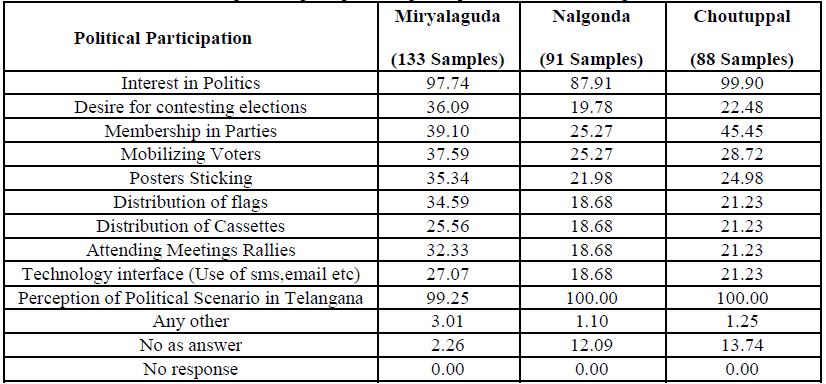The Geographical Distribution of Votes in Telangana's MPTC Elections
DOI:
https://doi.org/10.54741/ssjar.3.2.6Keywords:
modernization, election, political process, development, distributedAbstract
The political processes that result from the developmental articulations across the spaces are frequently diverse. Although this takes place at the level of socioeconomic strata, or the spatial aggregate, the political process changes very quickly. Socioeconomic disparities between groups may lead to conflicts in the public sphere. The ability to acquire resources, the economic standing of the populace, and cultural modernisation all play a significant role in the differentiation of social groups. It is a fact that distinct levels of awareness have arisen as a result of progressive articulation across social groups. We frequently find research on age groups, occupational mobility, gender, religion, ethnicity, caste, etc. in the geographical literature. All of these categories are combined into hegemonic and subaltern groupings. Such articulations are really about having access to resources like land, water, forests, institutions, and public spaces. The electoral process will advance democracy, which will make it easier for marginalised people to access the public sphere. However, in the name of party structures and governmental efficiency, electoral practises oppose the radical social transformation. In fact, the election process provides scope for a range of issues that the general public faces. As a result, it often gives rise to various ideologies, with geographic space assuming a major role.
Telangana's regional, sub-regional, and local spaces are investigated in the research paper. Elections for the Mandal Parishad Teritorial Constituency (MPTC) were held in 2001, 2006, and 2014. It explores the regional variances in political engagement. In 2001, there were 5,425 MPTCs in Telangana. With a growth rate of 13.90% from the previous elections, the total number of MPTCs increased to 6,179 in 2006, and this number then increased to 6,475 in 2014. The growth rate from the last election in 2006 is 4.79, while the overall growth rate from 2001 to 2014 is 19.35%.
Downloads
References
Kumari Seema. (2013). Electoral politics in Punjab, India: A case study of panchayat samiti and zila parishad elections of 2013. International Research Journal of Social Sciences, 2(7), 59-61.
Rajput, R.S., & D.R Meghe. (1984). Panchayat raj in India: Democracy at grassroots. New Delhi: Deepa and Deep Publications.
Election Report. (2001). State Election Commission, Andhra Pradesh, India.
Election Report. (2006). State Election Commission, Andhra Pradesh, India.
Election Report. (2014). State Election Commission, Andhra Pradesh, India.

Downloads
Published
How to Cite
Issue
Section
ARK
License
Copyright (c) 2023 Amar Nadella

This work is licensed under a Creative Commons Attribution 4.0 International License.
Research Articles in 'Social Science Journal for Advanced Research' are Open Access articles published under the Creative Commons CC BY License Creative Commons Attribution 4.0 International License http://creativecommons.org/licenses/by/4.0/. This license allows you to share – copy and redistribute the material in any medium or format. Adapt – remix, transform, and build upon the material for any purpose, even commercially.










